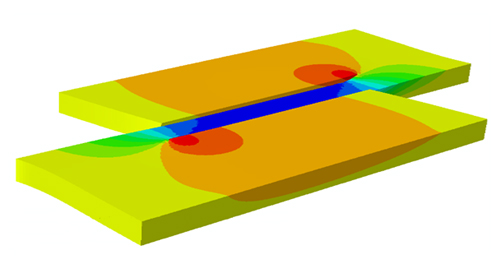Initiation, crustal architecture,
and extinction of pull-apart basins
By:
Jolante van Wijk
New Mexico Tech
Click for a Live Broadcast.

Abstract
I present a new model for the origin, crustal architecture, and evolution of pull-apart basins. The model is based on results of three-dimensional upper crustal numerical models of deformation, field observations, and fault theory, and it predicts pull-apart rift architecture and temporal evolution that can be tested with field- and geophysical data in future studies.
The model is generally applicable to basin-scale features, but predicts some intra-basin structural features. Geometric differences between pull-apart basins are inherited from the initial geometry of the strike-slip fault step, which may, in turn, result from the forming phase of the strike-slip fault system.
As strike-slip motion accumulates, pull-apart basins are stationary with respect to underlying basement, and the fault tips propagate beyond the rift basin. Because uplift is concentrated near the fault tips, the sediment source areas rejuvenate and migrate over time.
Pull-apart rift lengthening is accommodated by extension within the pull-apart basin as in narrow continental rifts. Field studies predict that pull-apart basins become extinct when an active basin-crossing fault forms; this is the most likely fate of pull-apart basins, because the strike-slip system tends to straighten. The model predicts what the favorable step-dimensions are for the formation of such a fault system, and when a pull-apart basin may further develop into a short seafloor-spreading ridge.
The model further predicts that rift shoulder uplift is enhanced if the strike-slip rate is larger than the fault-propagation rate. Crustal compression then contributes to uplift of the rift flank.




